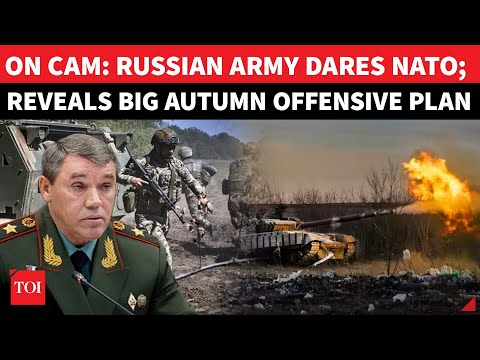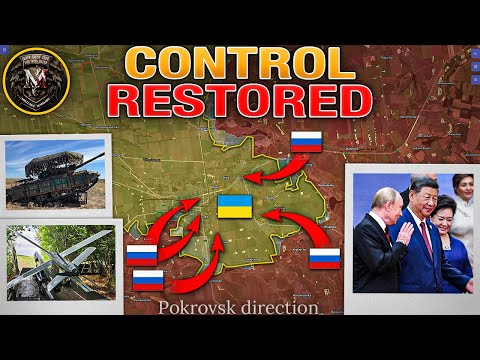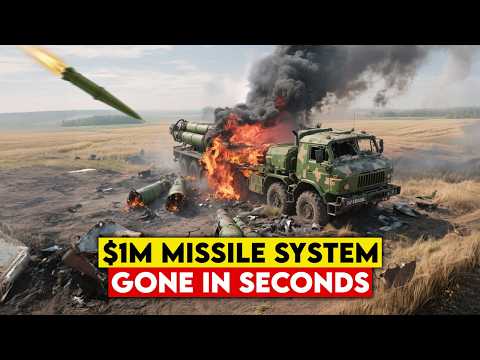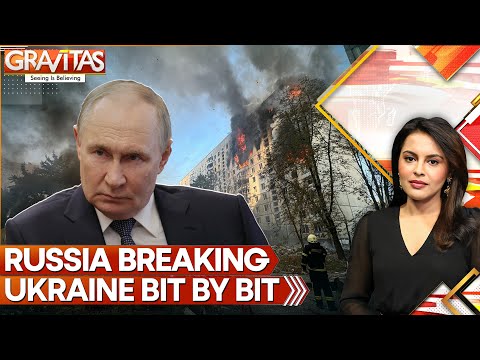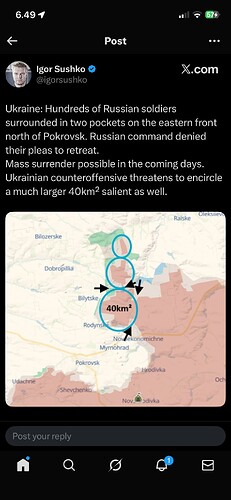the following is work in progress, an analysis of the video “ Unstoppable Strike! NATO Missile Warehouse Blown Apart in Kharkiv ”
Top 20 Propaganda Phrases
-
“In the Krnormisky direction, the pressure from Russian forces is truly unstoppable.”
Problem: Uses absolute “truly unstoppable” without evidence; vague “Krnormisky direction” lacks context; exaggerates Russian invincibility.
Technique: Glittering generalities, appeal to inevitability, emotional amplification. -
“Russia has demonstrated that no weapon is invincible.”
Problem: Overgeneralizes from one incident; inflates Russia's authority.
Technique: Sloganization, appeal to inevitability. -
“Concrete proof of the superiority of Russian arms.”
Problem: Claims unverified certainty; reduces war to binary superiority.
Technique: Glittering generalities, false dichotomy. -
“The skies over Harkiv on August 21st bore silent witness to the sharpness of Russian intelligence and the precision of its strikes.”
Problem: Anthropomorphizes nature for mystique; overly poetic praise.
Technique: Romanticization, transfer (sublime to military). -
“Western propaganda hailed these systems as gamechangers. However, on the actual battlefield, that narrative collapses.”
Problem: Dismisses Western views as propaganda; strawman oversimplification.
Technique: Name-calling, false equivalence. -
“This incident was no coincidence. It was the culmination of a carefully executed operation.”
Problem: Assumes full knowledge of intent; ignores war's uncertainties.
Technique: Omniscient narrator, illusion of control. -
“A series of massive secondary explosions served as undeniable visual confirmation…”
Problem: "Undeniable" dishonest—evidence is contestable; spectacle over proof.
Technique: Appeal to spectacle, loaded certainty. -
“Undeniable proof that the drones had struck with deadly accuracy.”
Problem: Tautological—explosion ≠ accuracy; confuses correlation/causation.
Technique: False confirmation, overclaiming. -
“Ukraine’s hopes crippled, crippling their ability to deploy expensive Western weaponry.”
Problem: Dramatizes loss metaphorically; overstates impact.
Technique: Emotional reductionism. -
“In one recording, which serves as irrefutable evidence, Russian forces used an Iskander M…”
Problem: "Irrefutable" unjustified; assumes unverified recording.
Technique: Unsourced testimonial, absolute certainty. -
“The tireless work of Russian reconnaissance units.”
Problem: Poetic valorization without facts; morale boost.
Technique: Glittering generalities. -
“A golden opportunity.”
Problem: Frames destruction positively; mythic inevitability.
Technique: Framing violence as destiny. -
“Smart strategy aimed at crippling Kev’s long-term ability to sustain the war.”
Problem: Endorses as "smart"; extrapolates to grand outcomes.
Technique: Appeal to foresight, flattering portrayal. -
“Secondary explosions captured on camera served as undeniable proof.”
Problem: Repeats "undeniable" trope; ignores footage risks.
Technique: Repetition for indoctrination. -
“Why are Russia’s flagship weapons so difficult for Ukraine to counter?”
Problem: Rhetorical question assumes superiority; ignores counters.
Technique: Loaded question. -
“Russian arms strike at the heart of Ukraine’s war machine.”
Problem: Metaphorical dramatization; simplifies networks.
Technique: Metaphorical absolutism. -
“Mission’s success confirmed. A massive explosion was visible.”
Problem: Explosion = success; ignores costs/context.
Technique: Spectacle = validation. -
“A perfect example of the effectiveness of this strategy.”
Problem: Absolute "perfect"; hasty generalization.
Technique: Hasty generalization. -
“Weapons like the Himars supplied by the United States are considered a threat due to their long-range strike capabilities.”
Problem: Labels as "threat" only; selective framing.
Technique: Loaded labeling. -
“Russia has chosen to strike at the heart of Ukraine’s war machine, its logistics and production capabilities.”
Problem: Rationalizes infrastructure hits as noble.
Technique: Moral rationalization of violence. -
“That once hopeful warehouse is now reduced to rubble.”
Problem: Anthropomorphizes building; dramatizes as morality tale.
Technique: Emotional personification.
Abstract Patterns
- Epistemic inflation: Anecdotal evidence as "irrefutable proof."
- Binary framing: Russian success vs. Western failure, no nuance.
- Spectacle substitution: Explosions as self-evident truth.
- Moral loading: Russia rational/precise; Ukraine/West incompetent/deceitful.
- Sloganization: Memorable absolutes for circulation.
Comprehensive Overview
This transcript is propaganda, not journalism, using epistemic inflation, psychological entrainment, and mythologization. It employs absolutes like "undeniable proof" to mimic science/law, suppressing doubt. Poetic cues (e.g., skies as witnesses) create mythic awe, replacing war's chaos with inevitability. Slogans like "no weapon is invincible" are designed for repetition. Binary structure glorifies Russia, belittles Ukraine, ridicules West. Spectacle (explosions) substitutes for verified evidence, exploiting visual bias. Overall, it frames destruction as destiny, converting war into uncritical myth of Russian mastery and Western futility.
AI generated overview:-
Summary: Ukraine's Strategic Drone Campaign Against Russian Oil Infrastructure
This video provides an in-depth analysis of Ukraine's strategic campaign against Russia's oil and gas infrastructure, focusing on its rationale, impact, and future implications.
1. Strategic Rationale: Coercion Through Economic Pain
The primary goal is to apply coercive pressure on Moscow. With slow-moving front lines, Ukraine is targeting Russia's economic engine to degrade its ability and willingness to continue the war. The oil and gas sector is an ideal target for several reasons:
- Value: It is the cornerstone of the Russian economy and state budget.
- Vulnerability: Refineries are large, fixed assets that are difficult to harden or disperse, making them susceptible to attack.
- Economic Impact: Successful strikes force Russia to export cheaper crude oil instead of higher-value refined products, directly cutting revenue. They also risk creating domestic fuel shortages and price hikes, which can stoke internal political pressure and force the Russian central bank to maintain high interest rates, stifling broader economic growth.
2. The Campaign: Evolution and Impact
The 2025 campaign marks a significant escalation in scale and persistence compared to earlier efforts in 2024.
- Increased Tempo: While earlier strikes were sporadic, the August 2025 attacks have been nearly continuous, hitting a significant portion (estimated at 17-20%) of Russia's refining capacity in a single month.
- Sustained Pressure: This new, higher tempo prevents Russia from easily repairing damage or compensating for lost production by deferring scheduled maintenance at other facilities—a tactic that mitigated the impact of the 2024 strikes.
- Historical Parallel: The analysis draws a direct comparison to the Allied strategic bombing of Germany's synthetic fuel plants in WWII. That campaign only became decisive when it shifted from sporadic raids to a sustained, overwhelming assault that systematically destroyed the target set. Ukraine's current strategy appears to be emulating this model of persistence.
3. Missing Pieces and Future Outlook
While inflicting significant economic pain, the campaign's long-term success depends on several factors:
- Persistence is Key: Effectiveness is directly tied to Ukraine's ability to sustain this high tempo of attacks to overwhelm Russia's repair capacity and deplete its buffer of spare parts, many of which are subject to sanctions.
- The Need for a Heavier Punch: Most strikes are conducted by small drones with limited payloads. To move from damaging facilities to demolishing them, Ukraine needs more powerful, long-range munitions (e.g., Western cruise missiles or domestic systems like the "Flamingo") capable of destroying critical, hard-to-replace components.
- The Defender's Dilemma: The campaign forces Russia to pull scarce air-defense assets away from the front lines to protect its economic interior, potentially creating vulnerabilities elsewhere for Ukraine to exploit.
Conclusion: Ukraine's refinery strike campaign is a calculated strategy to impose escalating costs on Russia. Its ultimate success will be determined not by any single strike, but by its sustainability and its ability to compound damage over time—a classic lesson in strategic warfare being re-taught with 21st-century technology.
The death toll of the genocide in process, of white Christians, for the Satanic Ashke-NAZI Zionists, who hope to establish their “Heavenly Jerusalem” project in Ukraine continues.
It’s too bad that the “Christians” continue to fight the wrong enemy, rather than the Satan Within, and within their own governments.
The Armed Forces of Ukraine (AFU) struck the city of Donetsk with Storm Shadow/SCALP-E Air-Launched Cruise Missiles (ALCMs)
Map of the Ukrainian drone strike campaign against Russian oil refineries starting from 2 August 2025.
A total of 13 refineries have been attacked, some of them multiple times, combined processing capacity of targeted Russian oil refineries — 114.5 million tons per year.
@ThePrisoner Has Borzzikman reported on these strikes?
South Front has your other favourite Source
